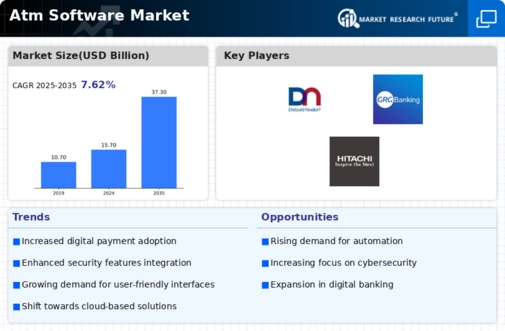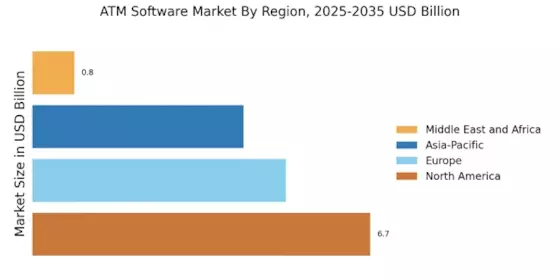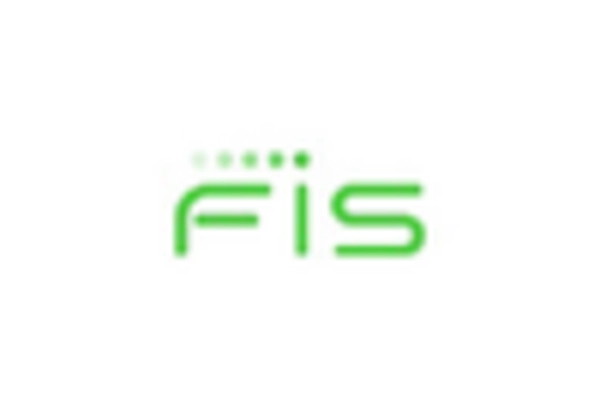Increased Focus on Cybersecurity Measures
In the ATM Software Market, the emphasis on cybersecurity has intensified significantly. With the rise in digital transactions, financial institutions are increasingly vulnerable to cyber threats. As a result, there is a pressing need for robust ATM software that incorporates advanced security features. Recent statistics suggest that cyberattacks targeting ATMs have risen by 30% in the last year, prompting banks to enhance their security protocols. This heightened focus on cybersecurity not only protects customer data but also fosters trust in automated banking solutions. Thus, the demand for secure ATM software is likely to drive growth in the ATM Software Market.
Adoption of Multi-Channel Banking Strategies
The ATM Software Market is significantly influenced by the adoption of multi-channel banking strategies. Financial institutions are increasingly integrating various channels, including mobile apps, online banking, and ATMs, to provide a cohesive customer experience. This integration necessitates advanced ATM software that can seamlessly interact with other banking platforms. Recent data indicates that banks implementing multi-channel strategies have seen a 20% increase in customer engagement. As institutions strive to meet evolving consumer expectations, the demand for versatile ATM software is likely to rise, further stimulating growth in the ATM Software Market.
Expansion of Financial Inclusion Initiatives
The ATM Software Market is witnessing a transformative phase due to the expansion of financial inclusion initiatives. Governments and organizations are increasingly recognizing the importance of providing access to banking services for underserved populations. This has led to the deployment of ATMs in remote and rural areas, necessitating the development of specialized ATM software that caters to diverse user needs. Recent reports indicate that the number of ATMs in underserved regions has increased by 40% over the past two years. This trend not only enhances accessibility but also drives the demand for innovative ATM software solutions, thereby propelling growth in the ATM Software Market.
Rising Demand for Automated Banking Solutions
The ATM Software Market experiences a notable surge in demand for automated banking solutions. As financial institutions strive to enhance customer experience, the integration of advanced ATM software becomes paramount. This software facilitates seamless transactions, reduces wait times, and offers personalized services. According to recent data, the adoption of automated banking solutions has increased by approximately 25% over the past year. This trend indicates a shift in consumer preferences towards self-service options, compelling banks to invest in sophisticated ATM software. Consequently, the ATM Software Market is poised for growth as institutions prioritize efficiency and customer satisfaction.
Emergence of Artificial Intelligence in Banking
The ATM Software Market is on the brink of transformation with the emergence of artificial intelligence (AI) in banking. AI technologies are being integrated into ATM software to enhance operational efficiency and customer service. Features such as predictive analytics, personalized recommendations, and automated customer support are becoming increasingly prevalent. Recent studies suggest that the implementation of AI in banking could lead to a 15% reduction in operational costs. This potential for cost savings, coupled with improved customer experiences, positions AI-driven ATM software as a key driver of growth in the ATM Software Market.


















Leave a Comment